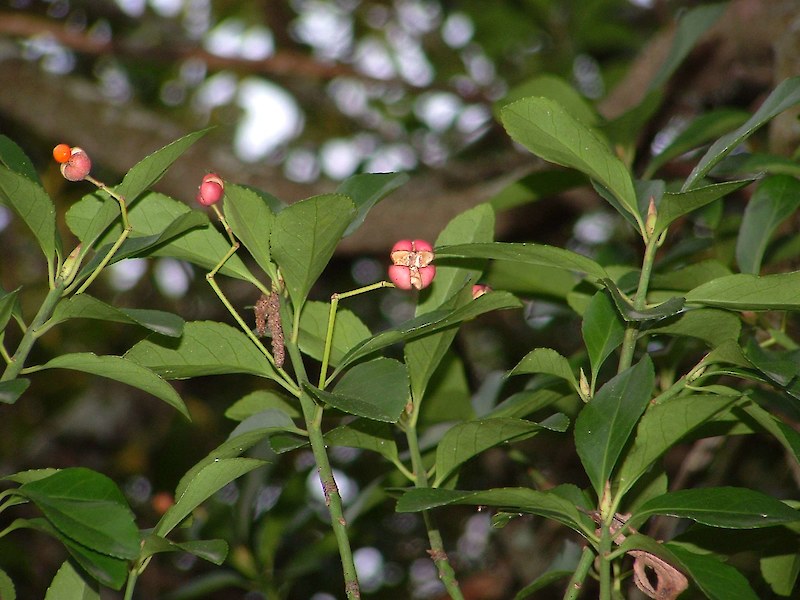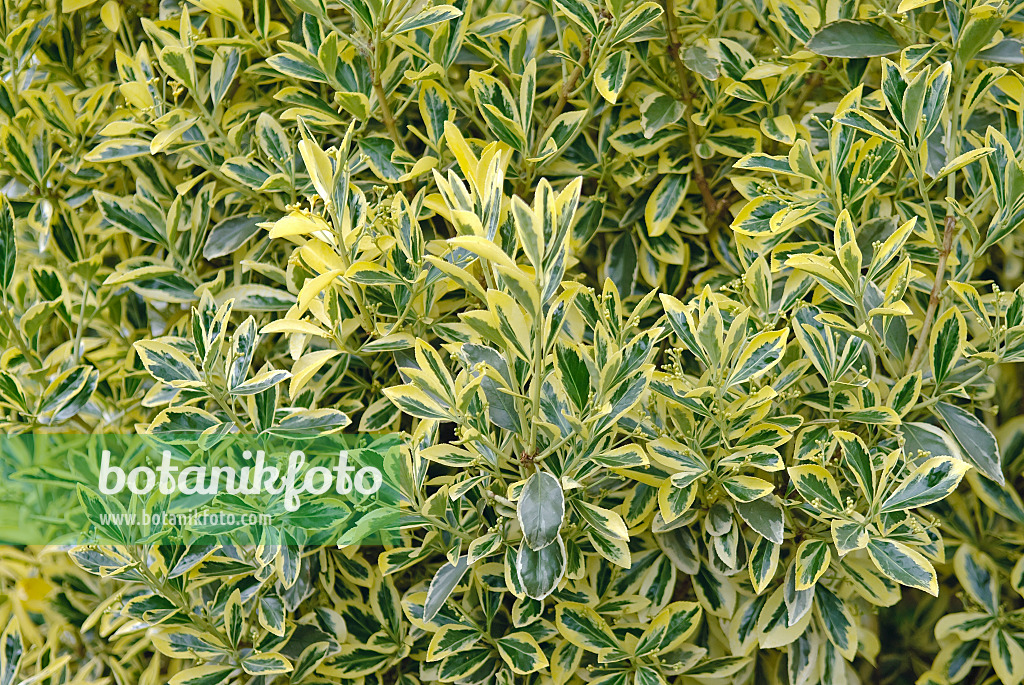


These varieties also respond quite well to clipping and trimming, which makes Euonymus Japonicus a popular choice for hedging and shaping, either as a topiary, rounded shrub, or a small tree. European spindle can eventually grow 20 feet wide tall and wide, though it is often seen smaller, while the American variety usually remains under 10 feet in height. Better known as Japanese Spindle, this group of evergreen Euonymus has many varieties and is probably the most salt and wind tolerant in the family. The white flowers in spring are small and insignificant as is the foliage before it turns its fiery color - spindle leaves are a nondescript oval shape and about two to three inches long. The fall foliage is responsible for another of its alternative names: 'burning bush'. The fruit, which hangs onto the branches as the foliage drops, opens into fours sections, earning spindle trees the alternative names 'hearts-a-bustin' and 'strawberry bush'. Extremely versatile, Japanese may be used for beds and borders, as a groundcover, massed on banks and slopes to control erosion or as a foundation plant.

#JAPANESE SPINDLE TREE HOW TO#
How to Identify Antique Windsor Chairs Accurately Common name: Japanese spindle tree Botanical name: Euonymus japonicus Management category: Advisory.This would help us to provide only the best-quality information.Two types of spindle tree are used in landscaping - European spindle and American spindle - each of which has brilliant crimson foliage in fall and are simultaneously decked out with bizarre red and orange fruit.

#JAPANESE SPINDLE TREE FREE#
If you’ve recognized any mistakes feel free to notify us about it. It typically grows to 15 feet high, but left alone it. They contain small seeds that have a pink tint and may contain poisonous substances. Japanese spindle tree (Euonymus japonica) This species, which originates from Asia, is evergreen and can theoretically grow several meters high. Japanese euonymus is a dense, oval, evergreen shrub or small tree commonly used as a landscape plant. This Japanese spindle tree (Euonymus japonicus) is one of the best dwarf trees thatll add beauty to your yard and maintain your privacy, says Monrovia. The flowers are not spectacular, relatively small, have a yellow-white or green-white color, and appear in the first half of summer under favorable conditions.Īs for the fruits, they are red, pink, or orange in color and can be seen closer to the beginning of autumn. The leaves become narrower closer to the base, and their edges have a silvery tint. Due to its attractive appearance and easy care conditions, the Japanese Spindletree is popular in many countries as an ornamental plant.Įuonymus japonicus is easily identified by its glossy, ovate, serrated leaves that are green in color and can grow up to 5 cm (2 inches) long. In its natural environment, it grows as a small tree or bush and can live in ordinary conditions and near the sea coast, thanks to its resistance to wind and salt. Japanese Spindletree is a showy flowering evergreen plant belonging to the Celastrales family and native to China, Korea, and Japan.


 0 kommentar(er)
0 kommentar(er)
